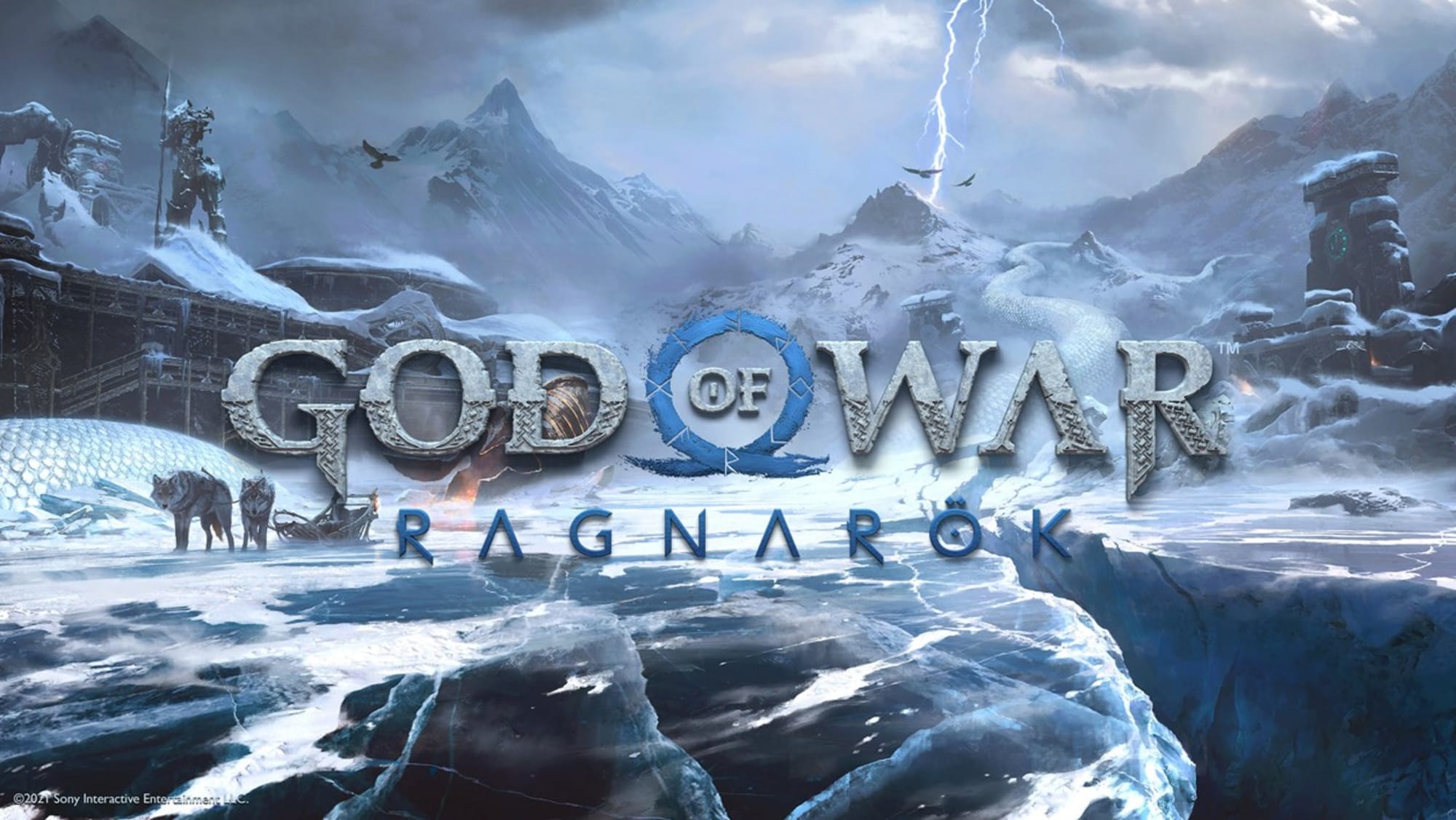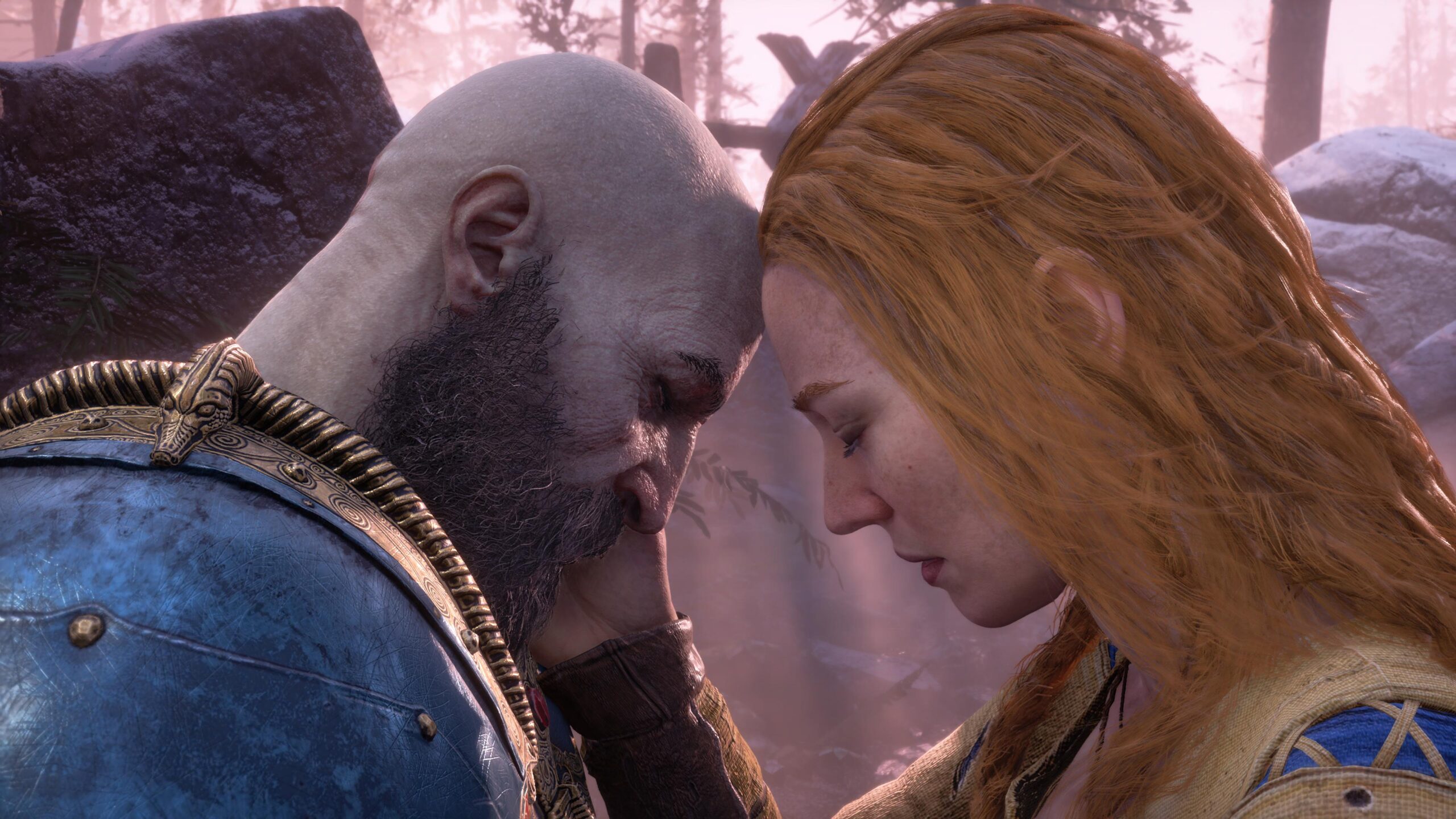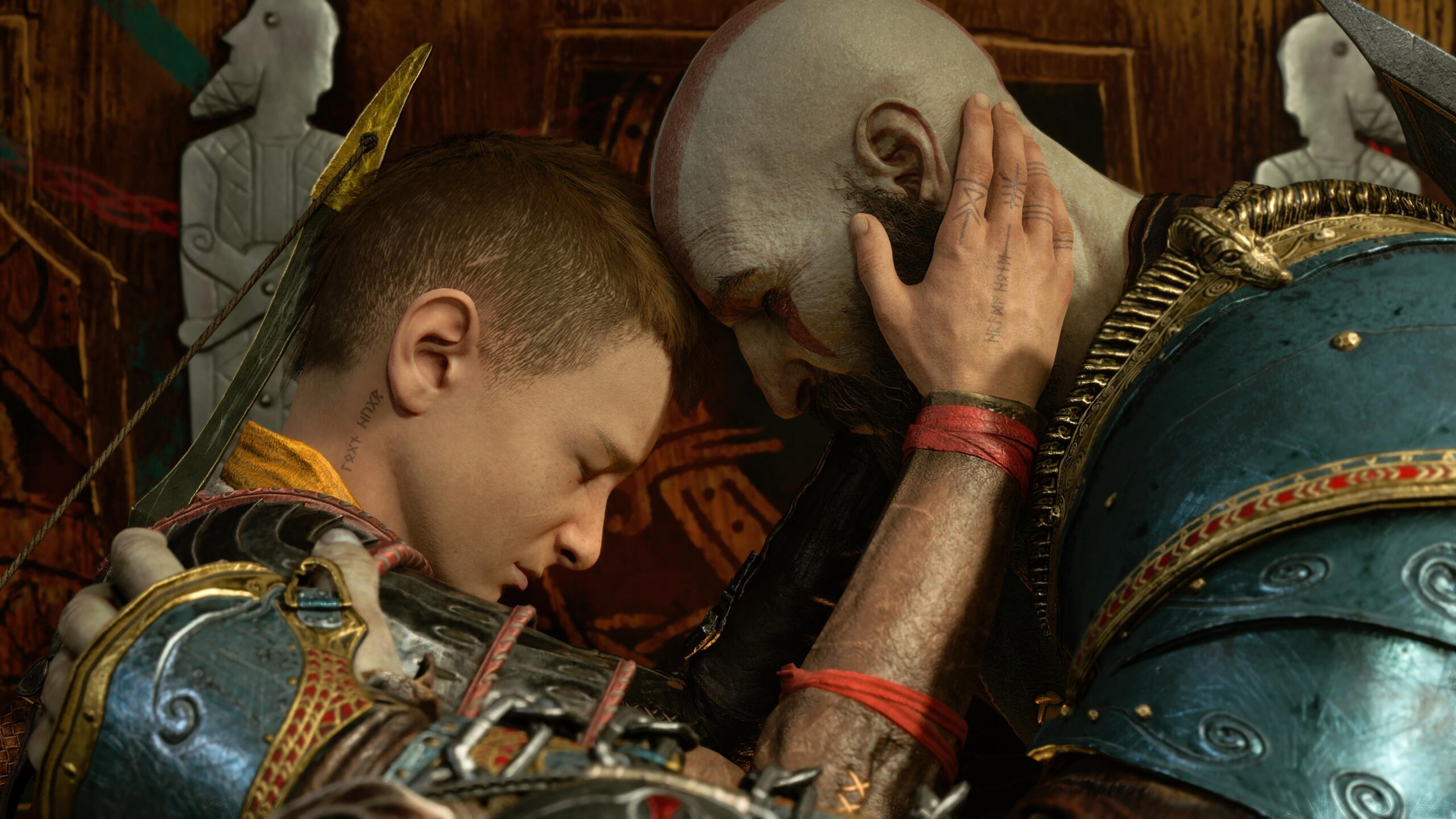Rare is the opportunity to play a game back to back with its sequel. Quite often there’s a long period between them, your memories of its predecessor fade and your opinion shifts as you inevitably make comparisons to more recent titles. But not so for God of War: Ragnarok as I dived right into it after I’d finished the original 2018 reboot. I was keen to see what 4 years of time did for the game, not to mention what running on current gen hardware would also bring to the table. Suffice to say, the core of what made the original great is still there however the game seems to be drowning in content, suffering from the all too familiar problems of increased scope to keep players engaged longer. I still very much enjoyed my time with it though I do feel the original was a much better, overall more focused experience.
PLOT SPOILERS FOR GOD OF WAR (2018) BELOW

Set three years after the events of the original the realm of Asgard has fallen prey to Fimbulwinter, a three year long winter that was set in motion when Kratos slew Freya’s son, Baldur. Kratos and Atreus have spent this time back at their home, relentlessly besieged upon by Freya who seeks vengeance for her son’s death. Returning home from a hunt one day you’re greeted by Thor and Odin who propose a truce: an end to the bloodshed if Atreus ends his quest to locate and free Tyr. Kratos refuses and, wanting to claim his blood debt for the death of his sons, Thor attacks which ends in a stalemate. Whilst they were away Odin proposes to Atreus that he come to Asgard, offering to leave Kratos alone if he does. All of these events have been prophesied as the beginnings of Ragnarok: the end of all the 9 realms. It seems that once again the Ghost of Sparta will be called back to war, no matter how much he tries to avoid it.
My expectations for Ragnarok’s visual experience were high, given that the 2018 reboot was still extremely good by today’s standards. Of course late generation titles usually are, since all optimisations and rendering tricks are well known. Even with that kind of advantage though Ragnarok blows it well out of the water. Overall model polycount is way up, draw distances are much longer, fidelity on things like hair is increased and extensive work has been done to the lighting system just to name a few things I noticed. All this is delivered with rock solid performance as well, the frame rate never dipping even in the most intense action sequences. Whilst you can still get this on PS4 you’re honestly going to be missing out on a lot of the effort that Santa Monica put into this if you do.

The 2018 reboot serves as the basis for Ragnarok which greatly expands and evolves on all aspects of the game. The core combat mechanics remain largely the same, however there’s a much more clear distinction between what each of the progression systems can do in moulding it to your own chosen playstyle. This is reflective of those systems getting quite an overhaul along with the addition of a few more ancillary progression mechanics, giving you an incredible amount of build diversity to explore. The maps have also become quite a bit larger than they were before, with simple side quests having the potential to unlock additional areas which could have hours of content just sitting there for you, should you want it. There’s been a marked increase in the number and variety of challenges and side quests you can pursue as well, more than enough to keep you going for double or triple the main storyline’s play time. Truly the scale increase between the two games cannot be understated but this is also one of the game’s greatest weaknesses.
You see for a good portion of the game, maybe half of my overall playthrough, it’s clear that the game is still in the getting to know you stage. There’s the usual array of metroidvania clues that there’s areas you can’t get to yet, which is fine by itself, but to still be introducing new mechanics, areas and even progression mechanics (through the use of multiple companions) does make the game feel really confused about what it wants to be for the first half. To be sure you can ignore a good chunk of the stuff if you want to and come back later once you’ve got all the tools you need to not have to think about it anymore, but it’s also clear that the game expects you to do things in a certain order. Coming back to redo some exploration in initial areas greeted me with completely useless rewards, strongly demotivating me to even bother continuing exploring. I can see why it’s done this way, there’s a good number of people who’ll soak themselves in this world for as long as they can, but for people like me who enjoyed the more cohesive experience of the original taking that long to really get going can be a real turn off.

Combat is as visceral and satisfying as it always was, providing a good balance between challenge and spectacle that I really came to enjoy over the course of the game. It does feel slightly less forgiving than its predecessor, routinely punishing you for pursuing highly aggressive builds that focus on quickly bursting enemies down rather than employing some semblance of strategy. However the game does have enough mechanics, talents and other augmentations to ensure that whatever playstyle you favour can be made viable for pretty much any encounter. For some of the later encounters of the game it can become a bit overwhelming trying to remember all your cooldowns, movesets and whatnot in order to maximise your DPS and survivability but quite often there’s an “optimal” weapon for the encounter, making the mental load just a touch lighter. I’m quite sure there’s a number of well broken builds out there though, given how many ways there are to stack certain benefits together.
MINOR PLOT SPOILER BELOW
The progression systems are numerous, ensuring that you’re never too far away from a small dopamine hit but also making it somewhat of a nightmare to min/max given there’s so many variables to tweak. For starters you have all the progression systems you had in the original: upgrades to your weapons and armour, talent trees that unlocked/augmented your abilities and a bevy of additional items (handles, pommels, artefacts) which can also be levelled up. Ragnarok adds the amulet onto that pile, providing another source of stats plus the ability to unlock situational buffs if you complete a set of 3. Atreus’ talent tree has also become far more in-depth, wholly because you’ll be spending a good amount of time playing as him solo. Then there’s also Freya’s talent tree as well, which is different and levelled separately to Arteus’. Whilst this does mean it always feels like you’re making some progress to the next power level it does make managing everything just a bit of a pain in the ass as there’s just so many things to look at, compare and judge if it’s worth upgrading to.
PLOT SPOILERS OVER

I will admit though, past a certain point in the game mixing up your build to try new things isn’t a huge burden. This is mostly because a lot of the materials you’ll pick up along the way aren’t exactly useful for higher end upgrades, given there’s no trade in system or anything like that, so if you happen to look at a piece of gear after picking up yet another widget and go “I wonder if that’d work” then you’ll likely be able to give it a red hot go. I tried this with a couple interesting amulet upgrades, specifically the one that changed the Valor spartan rage to heal less but give you lifesteal, to see if they’d work for me. They didn’t in the end but at least I didn’t feel like I’d blown my wad on a completely useless build.
The game’s newfound scale is both a blessing and a curse. It’s awesome to have massive areas to explore, knowing that if you’re chasing that particular upgrade or a potentially better armour or weapon upgrade that there’s plenty of opportunity to do so. The devs have also done a great job of making exporation rewarding in its own right, gifting you with great bits of dialogue and banter between characters that fleshes out the world and their relationships in it. However it can grind on you at some points, like when a simple side quest suddenly unlocks an entirely new area of the map, itself replete with dozens of additional side quests, collectibles and challenges. I did find myself getting a bit of open world fatigue with it at points, finding it especially exhausting when the characters tell you “We’ve still got time to explore!” before every campaign mission as if it might be the last chance you have to undertake those side missions (hint: nope, you can blast through the campaign and still go back).

I’d be remiss if I didn’t mention what a great job Santa Monica did with the overall craftsmanship of the game with great care taken to give Ragnarok a truly cinematic feel. This just isn’t great visuals, it’s the culmination of a whole slew of small things like the emulation of real cameras (both in movement and lenses), experienced mocap actors, great voice acting and a dedication to building a large world that you have a real impact on. Whilst I may complain about things like scale interfering with focus it’s still clear that the team was dedicated to crafting a world that you could wholly lose yourself in (and will likely keep being able to do so for a long time, considering this is one of Sony’s platinum IPs).
Tying this all together is the narrative which does so many things right. Whilst I may be slightly biased given my heavy interest in Norse mythology (I do have 2 kids named Freya and Thor after all…) I feel it treats the mythos with respect whilst still putting its own spin on events. All the characters are given ample room to grow, change and evolve over time especially if you pursue some of the many side quests that are available to you. The world gets bigger and more rich with each of the instalments as well, ensuring that this rebooted IP still has a very long runway. Finally the core overarching narrative hits a lot of emotion highs and lows, all of which are deserved and in service of the narrative. It really is just stellar in all regards.

God of War: Ragnarok certainly didn’t follow the formula for sequel success that many would have: iterate on the core and streamline the rest. No instead they revamped the core and expanded significantly and whilst I may have preferred the original’s more focused experience, I can’t deny what Ragnarok brings to the table. I’m also glad to now count myself as a fan of this IP, something I’d left by the wayside for over a decade for no good reason at all. So my thanks goes out to my mate for pestering me into playing this (you know who you are!) as playing through both these games has been a delight, and I’m very much looking forward to what’s to come.
This still wouldn’t have been my GOTY for last year though!
Rating: 9.25/10
God of War: Ragnarok is available on PlayStation 4 and PlayStation 5 right now for $89 and $109 respectively. Game was played on the PlayStation 5 with a total of 31 hours 40 minutes playtime and 38% of the achievements unlocked.



